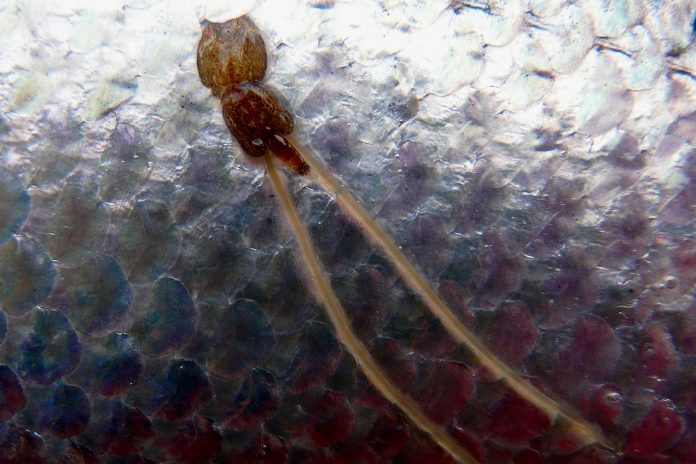BMT Environment UK will use proprietary software AquaDEEP to improve understanding of sea lice and its treatments.
In a press release, the international multidisciplinary engineering, science and technology consultancy BMT writes that its solutions will be used to address current pressing issues facing salmon farming in Scotland.
The UK Seafood Innovation Fund awarded BMT the project. Administered by the Centre for Environment, Fisheries and Aquaculture Science (Cefas) on behalf of the Department for Environment, Food and Rural Affairs (Defra), the UK Seafood Innovation Fund supports “projects with a long-term vision to improve the UK seafood, fishing and aquaculture industries, and has recognised BMT’s innovative solutions and contribution to these industries,” it wrote.
The project is also supported by Scottish Sea Farms, Marine Scotland Science, Aquatera and the Scottish Environment Protection Agency (SEPA).
BMT Environment UK Managing Director Matthew Roberts explained that it will deliver a feasibility study using innovative approaches, and use its proprietary software AquaDEEP to model biologically active sea lice dispersion, infection risk to farmed fish, sea lice response to bath treatment and its environmental impacts.
“Sea lice infestation is a major issue facing aquaculture in Scotland. Productivity loss due to lice infestations has a major impact on the industry, which contributes GBP 1.8 billion annually to the Scottish economy. Traditional treatment methods are costly and can have a detrimental impact on the marine environment,” said Roberts.
“To help businesses reduce commercial risks associated with expansion plans, while seeking to reach SEPA’s beyond compliance vision of sustainability, novel marine modelling techniques are needed to improve understanding of sea lice dispersion, infestation, the impact of chemical discharges on the marine ecosystem and benefits of targeted treatment methods,” wrote BMT.
BMT’s AquaDEEP, a fully integrated decision support system, powered by TUFLOW FV, incorporating hydrodynamic, particle tracking, water quality and aquatic ecosystem software helps salmon farmers make informed decisions on site selection and operational management practices. It incorporates novel advancements in modelling bioactive sea lice dispersion, infestation and response to bath treatment in a coupled hydrodynamic and ecosystem software and will support industry operators and environmental regulators with optimising aquaculture production and minimising ecosystem impacts.
“Together with our partners we will be enhancing the particle tracking module in AquaDEEP to incorporate sea lice maturation and motility response to environmental triggers as well as mortality from bath treatment. This tool will be used to target effective lice treatment practices and minimise environmental impact while reducing treatment costs and production losses, ensuring seafood security for years to come through sustainable farming practices,” added Roberts.
BMT said that it has over 20 years of experience working with regulators and it is an expert understanding of regulatory requirements relevant to aquaculture and is the presently the go-to consultancy for the Western Australian Department of Fisheries.
BMT Group was set up in 1985 and before then it was known as British Maritime Technology. It has worked on many notable projects, such the water tanks where the famous ‘bouncing bomb’ was developed during WWII and used during the Normandy landings. It also designed and built the UK’s new Type 31 frigates for the Royal Navy.

